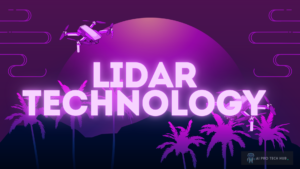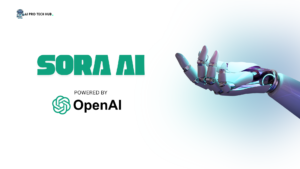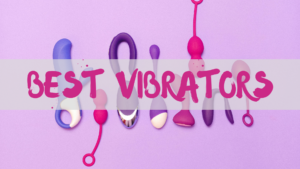Polysomnographic Technology: Unveiling the Mysteries of Sleep
In our developing world, sleep has become both a luxury and a necessity that many struggle to prioritize. Yet, sleep is vital for overall health and well-being. To understand and address sleep-related issues, the field of sleep medicine relies heavily on polysomnographic technology. This technology enables clinicians to monitor and analyze various physiological processes during sleep, providing a window into the complex world of our nightly rest. In this article, I will explain to you the fundamentals of polysomnography, its components, applications, and the future of sleep technology. Let’s learn about Polysomnographic Technology:

What is Polysomnography?
Polysomnography (PSG) is a comprehensive diagnostic tool used to study and analyze sleep patterns and disorders. It involves the simultaneous recording of multiple physiological parameters throughout the sleep cycle of a human. The aim is to capture detailed data on brain activity, eye movements, muscle activity, heart rate, respiratory effort, and oxygen levels of the patient. This information helps clinicians diagnose and treat sleep disorders of a patient, offering insights into how sleep is structured and where disruptions occur.
What Are The Components of Polysomnographic Technology
Polysomnographic technology comprises several key components, each providing unique insights into various aspects of sleep. I will explain to you about each component of Polysomnographic Technology
1. Electroencephalography (EEG)
What is Electroencephalography (EEG)
EEG is central to polysomnography. It measures electrical activity in the brain through electrodes placed on the scalp. EEG data are used to identify different sleep stages, including REM (Rapid Eye Movement) and non-REM (NREM) sleep. The brain’s electrical activity exhibits distinct patterns during various stages of sleep, which helps clinicians differentiate between restful sleep and potential disturbances.
Key EEG Sleep Stages:
- Stage 1 (N1): Light sleep, transitional phase between wakefulness and deeper sleep.
- Stage 2 (N2): Moderate sleep, characterized by sleep spindles and K-complexes.
- Stage 3 (N3): Deep sleep, or slow-wave sleep, crucial for physical restoration.
- REM Sleep: Associated with vivid dreaming and memory consolidation.
2. Electrooculography (EOG)
What is Electrooculography (EOG)
EOG monitors eye movements through electrodes placed near the eyes. Eye movement patterns help distinguish between REM and NREM sleep. During REM sleep, the eyes exhibit rapid movements, which are absent in other sleep stages. This distinction is crucial for accurate sleep staging and for diagnosing disorders like REM Sleep Behavior Disorder (RBD).
3. Electromyography (EMG)
What is Electromyography (EMG)
EMG measures muscle activity, typically from electrodes placed on the chin or legs. This helps identify muscle tone changes that occur during sleep. Abnormalities in muscle activity can indicate conditions such as periodic limb movement disorder (PLMD) or sleep-related bruxism (teeth grinding).
4. Electrocardiography (ECG)
What is Electrocardiography (ECG)
ECG monitors the heart’s electrical activity, providing insights into heart rate and rhythm. This is especially important for identifying sleep-related cardiac issues, such as arrhythmias or significant changes in heart rate associated with sleep apnea.
5. Respiratory Monitoring
What is Respiratory Monitoring
Respiratory monitoring involves several components:
- Nasal Cannula or Thermal Sensor: Measures airflow through the nose to detect breathing patterns.
- Chest and Abdominal Respiratory Effort Sensors: Monitor the expansion and contraction of the chest and abdomen, helping to assess respiratory effort and detect obstructions in Polysomnographic Technology
6. Pulse Oximetry
What is Pulse Oximetry
Pulse oximetry measures blood oxygen levels using a small sensor typically placed on a fingertip or earlobe. This is crucial for detecting drops in oxygen saturation, which can indicate conditions such as obstructive sleep apnea (OSA) where breathing interruptions occur during sleep.
7. Body Position Sensors
What are the Body Position Sensors
Body position sensors track the patient’s sleeping position. This information can be important for diagnosing sleep disorders that are position-dependent, such as positional obstructive sleep apnea.
The Polysomnographic Study Process
A polysomnographic study, or sleep study, is typically conducted in a sleep clinic or specialized sleep lab. The process generally involves the following steps:
1. Pre-study Preparation
Before the study, patients are usually advised to avoid caffeine and alcohol, which can affect sleep patterns. They may also be instructed to follow specific guidelines to ensure accurate results.
2. Electrode Placement
On the night of the study, the patient arrives at the sleep lab, where technicians attach electrodes and sensors to various parts of the body. These include the scalp, face, chest, and limbs.
3. Data Collection
The patient then sleeps in a monitored environment while the equipment continuously records physiological data. The sleep lab environment is designed to be as comfortable as possible to simulate normal sleeping conditions.
4. Data Analysis
After the study, the recorded data is analyzed by a sleep specialist. The analysis involves reviewing the different physiological signals to assess sleep architecture, identify any abnormalities, and determine the presence of sleep disorders.
5. Diagnosis and Treatment
Based on the analysis, the sleep specialist diagnoses any sleep disorders and recommends appropriate treatments or interventions. This might include lifestyle changes, behavioral therapies, or medical treatments.
Common Applications of Polysomnography
Polysomnography is used to diagnose and manage a wide range of sleep disorders. Some of the most common conditions evaluated through PSG include:
1. Obstructive Sleep Apnea (OSA)
OSA is characterized by repeated interruptions in breathing during sleep due to an obstruction in the upper airway. Polysomnography helps diagnose OSA by detecting apneas (complete cessation of breathing) and hypopneas (partial cessation of breathing), along with associated drops in oxygen levels and disruptions in sleep patterns.
2. Insomnia
Insomnia involves difficulty falling or staying asleep. Polysomnography can help identify factors contributing to insomnia, such as sleep fragmentation or abnormal sleep architecture, and differentiate between primary insomnia and secondary insomnia related to other medical conditions.
3. Narcolepsy
Narcolepsy is a neurological disorder characterized by excessive daytime sleepiness and sudden sleep attacks. Polysomnography, combined with multiple sleep latency tests (MSLT), helps diagnose narcolepsy by assessing the ability to fall asleep during the day and identifying abnormal REM sleep patterns.
4. Periodic Limb Movement Disorder (PLMD)
PLMD involves involuntary leg movements during sleep that can cause sleep disruption. Polysomnography detects these movements and assesses their impact on sleep quality.
5. Restless Legs Syndrome (RLS)
RLS is a condition characterized by uncomfortable sensations in the legs and an uncontrollable urge to move them. PSG can help assess the relationship between these sensations and sleep disturbances.
6. Parasomnias
Parasomnias include abnormal behaviors during sleep, such as sleepwalking or night terrors. Polysomnography helps diagnose these conditions by recording and analyzing sleep-related behaviors and movements.
What Are The Future of Polysomnographic Technology
As technology advances, so does the field of sleep medicine. Several emerging trends and innovations are shaping the future of polysomnographic technology:
1. Wearable Sleep Monitors
Wearable devices, such as smartwatches and fitness trackers, are becoming more sophisticated in tracking sleep patterns. While they may not provide the comprehensive data of traditional polysomnography, they offer convenient, continuous monitoring and can help identify potential sleep issues.
2. Home Sleep Testing
Home sleep testing (HST) devices offer a less invasive and more accessible alternative to in-lab polysomnography. These devices can monitor essential parameters such as airflow, oxygen saturation, and respiratory effort in a home setting. HST is particularly useful for diagnosing conditions like OSA, although it may not capture the full range of sleep disorders.
3. Artificial Intelligence and Machine Learning
AI and machine learning algorithms are increasingly being used to analyze polysomnographic data. These technologies can improve the accuracy and efficiency of sleep disorder diagnosis by identifying patterns and anomalies that may not be evident through traditional analysis.
4. Telemedicine and Remote Monitoring
Telemedicine and remote monitoring are transforming the field of sleep medicine. Patients can now consult with sleep specialists and undergo remote monitoring, making sleep studies more accessible and convenient.
READ MORE RELATED POSTS>
Conclusion
Polysomnographic technology is a cornerstone of sleep medicine, providing crucial insights into the complex nature of sleep. By monitoring multiple physiological parameters simultaneously, polysomnography helps diagnose a wide range of sleep disorders and informs effective treatment strategies. As technology continues to evolve, the field of sleep medicine is poised to benefit from innovations that enhance our understanding of sleep and improve patient care. Whether through advanced in-lab studies, wearable devices, or remote monitoring, the quest to unravel the mysteries of sleep is ongoing, promising a future where better sleep health is within everyone’s reach.
What is Polysomnographic Technology Diploma
A Polysomnographic Technology Diploma trains individuals to become sleep technologists, who specialize in diagnosing and treating sleep disorders. The program covers the study of sleep patterns, the use of polysomnography equipment, and the interpretation of sleep studies. Coursework typically includes sleep disorders, EEG, EKG, and respiratory monitoring. Students gain hands-on experience in sleep labs, learning to conduct sleep studies and analyze data to help diagnose conditions like sleep apnea and insomnia. This diploma equips graduates with the skills needed to work in clinical settings, improving patients’ sleep health and overall well-being.
How much Polysomnographic technology salary in United States
As of recent data, a polysomnographic technologist in the United States typically earns between $50,000 and $70,000 annually. Entry-level positions may start around $40,000, while experienced professionals or those with advanced certifications can earn up to $85,000 or more. Salaries can vary based on factors such as location, experience, and the type of healthcare facility. Technologists working in high-demand areas or specialized settings may receive higher compensation. Benefits often include health insurance, retirement plans, and paid time off. This field offers a stable career with opportunities for advancement and specialization.
How much Polysomnographic Technology salary in Texas in 100 words
In Texas, polysomnographic technologists typically earn between $55,000 and $70,000 per year. Entry-level positions may start around $50,000, while more experienced technologists or those with advanced certifications can earn up to $75,000 or more. Salaries can vary based on factors such as specific location within Texas, level of experience, and the type of healthcare facility. Technologists working in larger cities or specialized centers might see higher pay. Additionally, benefits like health insurance, retirement plans, and paid time off are commonly included, making it a stable career with room for growth and specialization.
How long is the polysomnographic technology diploma program
The Polysomnographic Technology Diploma program typically lasts between 6 to 12 months when pursued full-time. This duration includes comprehensive coursework, hands-on training, and clinical experience. Programs often consist of approximately 20-30 credit hours of instruction covering sleep disorders, polysomnography equipment, and data interpretation. Students also complete supervised clinical hours to gain practical skills in real-world settings. Some institutions offer part-time or online options, which may extend the program length. The diploma prepares graduates for certification exams and entry-level positions in the field of sleep technology, equipping them with the necessary expertise to diagnose and manage sleep disorders.
-
Ideogram 2.0: A Leap Forward in AI Image Generation

What is Ideogram 2.0 Ideogram 2.0 is a cutting-edge AI image generation tool that has gained significant attention within the […]
-
Best AI Question Answer Systems 2024: A Guide to the Future of Information Retrieval

Artificial intelligence (AI) has significantly transformed how we access and process information in today’s fast-paced digital world. The rise of […]
-
2024 Flip Phone Launches: Motorola Razr 50 Series, Samsung Galaxy Z Flip 6, and More

This year has been a big one for flip phone enthusiasts, with some highly anticipated models already making their debut. […]










